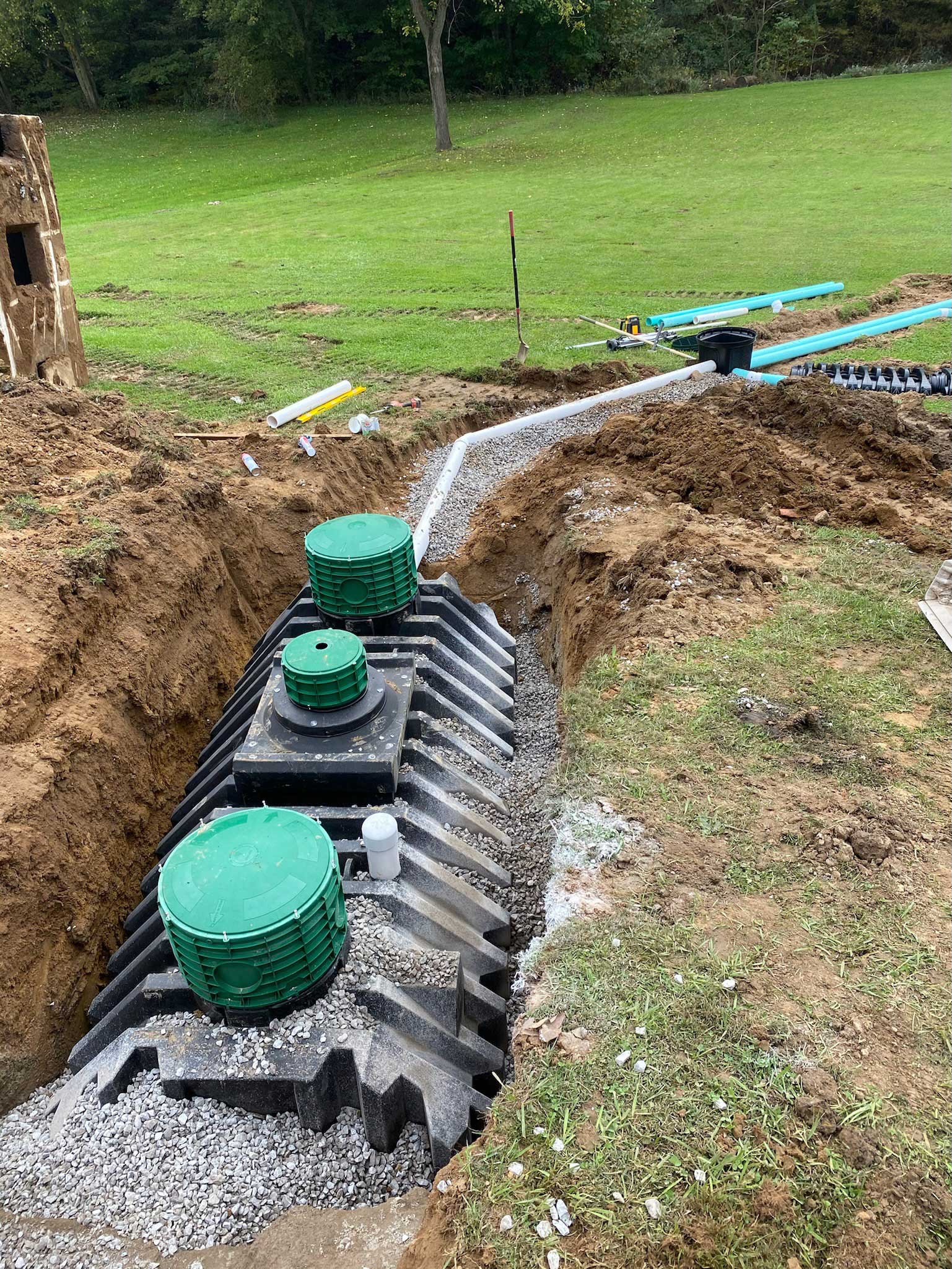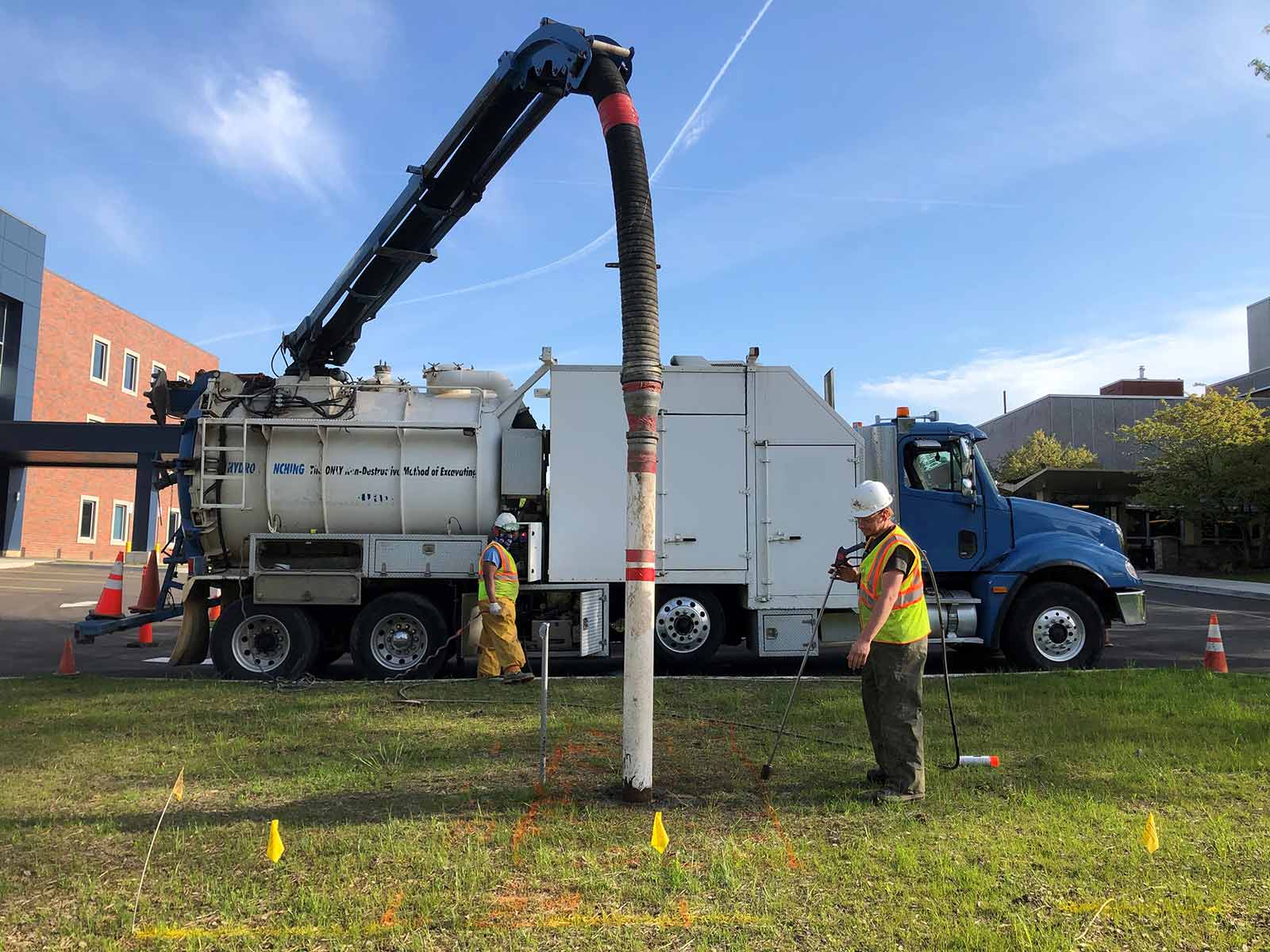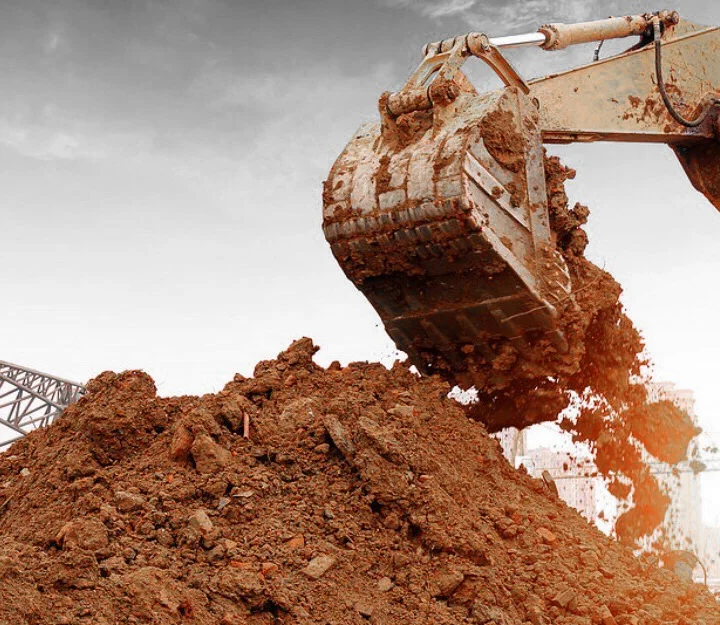Economical Lancaster Excavation - High Quality Excavation at Competitive Costs
Economical Lancaster Excavation - High Quality Excavation at Competitive Costs
Blog Article
Unveiling the Art of Excavation: Pro Tips for Safe and Efficient Excavating
In the world of excavation, the proficiency of secure and effective excavating is an art type that calls for adherence, accuracy, and knowledge to well-known methods. As dirt is transformed and planet is relocated, the details of excavation reveal themselves, requiring an eager understanding of tools, soil composition, safety procedures, and ecological considerations. The knowledge needed to navigate these elements efficiently can imply the difference in between an effective excavation project and a prospective catastrophe. By untangling the layers of this complex procedure, a world of methods and insights awaits those seeking to raise their excavation skills to brand-new heights.
Importance of Appropriate Devices
To ensure the safety and security and effectiveness of any kind of excavation project, using the ideal equipment is extremely important. Excavation tasks vary in scope and complexity, varying from small property landscaping jobs to massive building and construction undertakings.
Excavators are basic pieces of machinery in any excavating operation. These flexible equipments can be found in numerous sizes to match various task needs. Mini excavators are optimal for smaller sized jobs, while larger excavators deal with extra extensive projects efficiently. Backhoes are another necessary devices kind, integrating the functions of a loader and an excavator in one device. They are important for tasks requiring convenience and ability to move.
Bulldozers succeed in tasks that need pressing big quantities of soil or debris. By spending in the proper devices, excavation projects can be finished securely, on time, and with accuracy.
Comprehending Soil Make-up
A thorough understanding of dirt structure is fundamental for performing excavation tasks with precision and safety and security. Understanding the different kinds of soil is essential as it directly impacts excavation methods, equipment option, and total project efficiency.
Sand particles are the biggest and give excellent water drainage but provide little communication. Silt fragments are smaller sized than sand but bigger than clay, using modest drain and cohesion. Clay bits are the smallest and provide high communication however poor drainage. Organic matter, such as rotting plant material, affects soil fertility and stability.
Prior to commencing excavation, conducting soil tests to determine its composition and qualities is vital. This information assists in picking the suitable devices, applying precaution, and creating excavation approaches customized to the specific dirt conditions - lancaster excavation. By understanding dirt structure, excavation specialists can improve project end results while making certain security and adherence to finest techniques
Safety And Security Steps and Methods
Comprehending soil make-up is the keystone upon which precaution and protocols for excavation projects are constructed, making certain the well-being of employees and the success of the endeavor. When it concerns security throughout excavation, there are numerous essential procedures that need to be applied to reduce dangers and protect against accidents.
Firstly, prior to any type of digging commences, a complete evaluation of the website should be carried out to recognize any type of possible check over here hazards such as underground energies, Home Page unsteady dirt conditions, or close-by frameworks that can position a risk. It is important to have a qualified individual manage the excavation procedure to make sure that all safety and security procedures are complied with purely.
Additionally, all employees associated with the excavation should be appropriately educated in safe digging methods and the correct operation of devices. Individual protective tools (PPE) such as hard hats, high visibility clothes, handwear covers, and security boots must be put on in all times to minimize the risk of injuries. lancaster excavation. Regular safety conferences and toolbox talks should also be conducted to keep all workers informed about potential hazards and reinforce safe work methods. By adhering to these precaution and procedures, excavation projects can be completed efficiently and without occurrence.
Reliable Excavation Planning
When embarking on an excavation job, careful planning is essential to guarantee efficiency, safety and security, and effective outcomes. Reliable excavation preparation includes several key actions that are vital for the smooth implementation of the task.
As soon as the site analysis is full, the next action is to develop a clear timeline and routine for the excavation tasks. This includes figuring out the series of jobs, equipment demands, and manpower allocation. Appropriate organizing aids stay clear of hold-ups and makes certain that the task remains on track.

Moreover, communication amongst all employee is vital throughout the preparation phase. Clear regulations, routine updates, and efficient control are essential for a successful excavation project. By investing time and effort in meticulous preparation, excavation groups can considerably boost productivity, decrease risks, and accomplish effective results.

Managing Ecological Factors To Consider
With enhancing focus on environmental sustainability in construction techniques, handling ecological factors to consider has actually ended up being a crucial facet of excavation jobs. Excavation activities have the possible to influence the surrounding setting with dirt disintegration, sediment drainage, habitat disturbance, and contamination of water resources. To alleviate these dangers, it is important to apply finest techniques that focus on environmental management.

Moreover, appropriate waste administration is important to avoid dirt and water contamination. Applying treatments for the disposal of harmful materials, recycling of waste products, and lessening using hazardous chemicals can significantly reduce the environmental influence of excavation jobs. By integrating these methods into excavation planning and execution, construction companies can make certain that their tasks are not only safe and productive yet likewise environmentally responsible.
Verdict
Finally, grasping the art of excavation needs a detailed understanding of correct tools, soil composition, precaution, and efficient preparation. By complying with these guidelines and taking into consideration ecological aspects, excavations can be performed safely and efficiently. It is crucial to focus on security and productivity in every excavating job to guarantee effective end results.
As soil is transformed and planet is moved, the complexities of excavation reveal themselves, requiring a keen understanding of equipment, soil structure, safety methods, and environmental considerations.To guarantee the security and effectiveness of any excavation project, making use of the suitable equipment is paramount.An extensive grasp of soil structure is fundamental for executing excavation tasks with accuracy and security. Understanding the various types of soil is essential as it straight affects excavation techniques, tools selection, and general task efficiency. By recognizing dirt composition, excavation professionals can improve task outcomes while making certain security and adherence to ideal methods.
Report this page